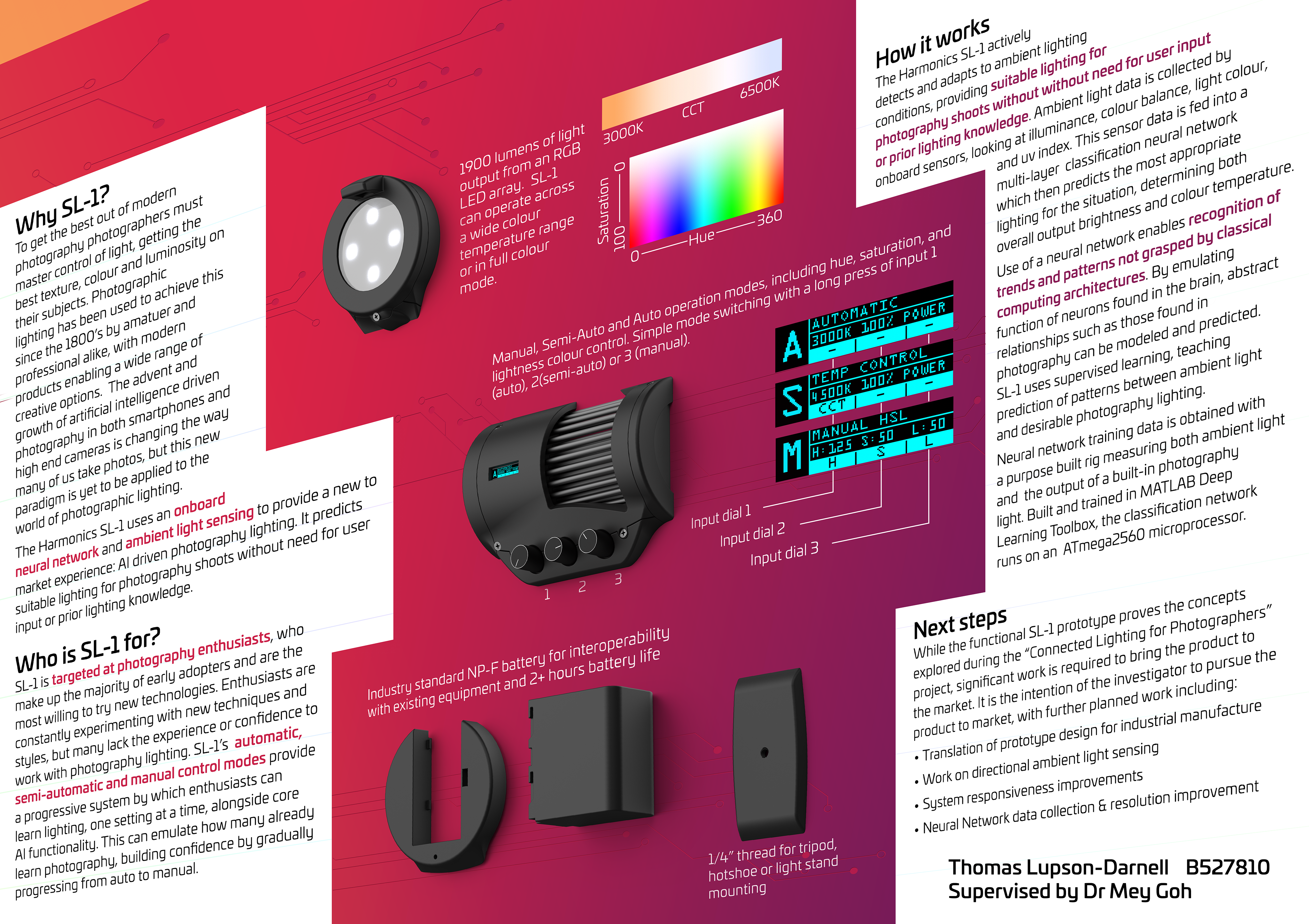Lighting has been an integral part of photography since its inception in the early 1800’s, originally being used reduce the time taken to capture images. Today, the creation of professional looking photographs requires correct control of light to get the best texture, colour and luminosity on subjects. Used by professional and amateur photographers alike, modern photographic lighting enables the creator to determine not only brightness and darkness, but also tone, mood, and atmosphere.
Alongside, use of Artificial Intelligence in cameras has enabled both casual and experienced users to capture better images. The latest smartphones apply deep neural networks to choose camera settings, and AI auto focus in professional cameras enables real-time eye tracking. However, these evolutions are yet to be applied in photographic lighting, presenting an opportunity for development of a new product using AI.
The project included investigations into ambient light sensing, LED technology, interviews & questionnaire, testing existing products, market trends & competitors. With user needs & design specification formed, development focused on system, electrical and software design, as well as a custom AI data collection rig.
The prototype combines ambient light sensing, a shallow neural network and closed-loop controlled LED’s in a processing chain capable of determining and outputting appropriate lighting for a given environment without user input.
The following images and video are from the project exhibition at Engineering Designers 2019. You can read about my involvement in graphic design for the brochure here


